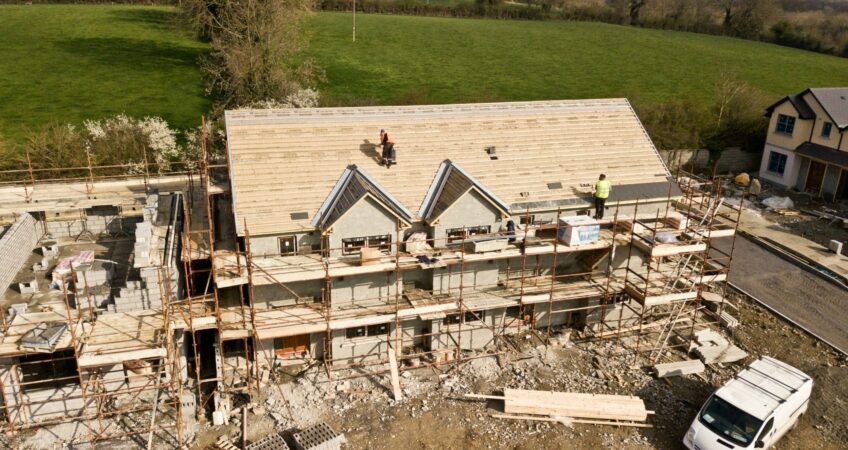Introduction – Beyond Repair and Rebuild
For decades, structural engineering has been associated with fixing, strengthening, and maintaining buildings. But the construction industry is changing rapidly. In the UK, where sustainability and net zero goals are shaping every stage of development, the role of structural engineers goes far beyond patching cracks or meeting compliance.
Enter regenerative design a forward-looking approach where buildings don’t just minimise harm, but actively restore, replenish, and benefit their environment and communities. At Ecoden Constructions Ltd., we believe structural engineering is central to this transformation. By combining eco-friendly design, advanced structural calculations, and precise building regulations drawings, we help developers and property owners achieve more than just compliance we help them build a sustainable legacy.
What Is Regenerative Design?
While sustainable design focuses on reducing a building’s environmental footprint, regenerative design takes it a step further. It asks: how can this building give back?
Instead of only conserving energy, regenerative projects generate energy. Instead of only limiting water usage, they recycle and restore water systems. Instead of neutral carbon impact, they aim for positive environmental and social outcomes.
Examples include:
- Energy-positive buildings that generate more power than they consume.
- Biodiversity-supporting landscapes like living roofs and vertical gardens.
- Community-focused spaces that improve wellbeing while cutting emissions.
Why Regenerative Design Matters in the UK
The UK construction industry faces pressing challenges:
- The government’s net zero by 2050 commitment.
- Climate change impacts, from flooding to rising energy costs.
- Increasing demand for Future Homes Standard-ready housing.
- Urbanisation pressures in cities like London, Manchester, and Birmingham.
Regenerative design addresses all these by making structures resilient, efficient, and restorative. For property developers, investors, and communities, this approach delivers long-term value not just compliance.
The Role of Structural Engineers in Regenerative Design
Structural engineers provide the backbone of regenerative design. At Ecoden, we integrate regenerative principles directly into our architectural drawings, structural calculations, and on-site consultations.
This means:
- Selecting materials that reduce embodied carbon.
- Designing foundations and frameworks that support green technologies like solar panels and rainwater harvesting.
- Creating structures that are future-ready and adaptable.
For example, when retrofitting older UK properties, our engineers develop structural drawings that ensure eco-upgrades like green roofs or recycled steel frameworks comply with Building Regulations while maximising efficiency.
Explore our Building Regulations Drawings service here.
Core Principles of Regenerative Structural Engineering
- Energy Positive Systems – Using solar panels, geothermal systems, and efficient insulation.
- Water Management – Designing buildings that capture, filter, and reuse rainwater and greywater.
- Biophilic Integration – Incorporating natural light, ventilation, and greenery into structural design.
- Circular Economy Thinking – Designing for dismantling, reuse, and recycling of building materials.
Each of these elements requires advanced structural calculations to ensure safety, compliance, and durability an area where Ecoden excels.
Regenerative Materials and Methods
Structural engineers have a critical say in what materials are used, and regenerative design favours eco-friendly, renewable, and low-carbon options such as:
- Cross-Laminated Timber (CLT): A renewable, lightweight alternative to steel and concrete.
- Low-Carbon Concrete: Using geopolymer or recycled aggregate mixes to cut emissions.
- Recycled Steel: Lower energy demand compared to virgin steel production.
- Prefabricated Modular Elements: Reducing on-site waste and enabling recycling.
Regenerative Design in Urban vs Rural UK Settings
The UK’s diverse landscape requires tailored approaches:
- Urban Areas: Space constraints demand creative solutions like vertical gardens, modular builds, and rooftop solar.
- Rural Communities: Projects often focus on eco-housing, flood resilience, and community energy systems.
Ecoden’s structural engineers balance local planning rules with innovative structural design, ensuring each project fits its unique context.
Real-World Inspiration
- BedZED, London – The UK’s first large-scale carbon-neutral development, designed with community regeneration in mind.
- Bullitt Center, Seattle – Known as the “greenest commercial building in the world,” it generates more energy than it uses.
These projects demonstrate what’s possible when structural engineers think regeneratively. Ecoden’s mission is to bring this vision into mainstream UK construction.
Regulatory Compliance and Building Control
One of the challenges with regenerative projects is ensuring they meet stringent UK building regulations. Ecoden simplifies this process by:
- Producing precise building regulations drawings.
- Carrying out accurate structural calculations.
- Liaising with Building Control for faster approvals.
Our clients benefit from quicker approvals, fewer delays, and compliant eco-friendly solutions.
Discover our Structural Calculations services here.
The Business Case for Regenerative Design
Adopting regenerative practices isn’t just about environmental responsibility it makes financial sense too.
- Reduced operating costs through energy and water savings.
- Higher property values for eco-certified buildings.
- Marketing advantage for developers seeking sustainable investment appeal.
- Resiliency against future regulatory shifts and rising energy costs.
Challenges and Ecoden’s Solutions
- Higher upfront costs: Ecoden helps clients model lifecycle savings to prove ROI.
- Complex structural requirements: Our experienced engineers handle the most intricate structural drawings.
- Knowledge gaps among stakeholders: We provide expert consultation and reporting to guide clients.
The Future of Regenerative Structural Engineering in the UK
The next decade will see rapid advances:
- AI and BIM integration for smarter eco-design.
- Wider use of digital twins for monitoring building performance.
- Government incentives for meeting Future Homes Standard early.
At Ecoden Constructions, we aim to lead this shift, making regenerative design not an option but the standard.
Conclusion – Why Choose Ecoden Constructions
Regenerative design isn’t just a buzzword it’s the future of construction. By combining innovation, sustainability, and structural expertise, buildings can do more than stand tall; they can give back to people and the planet.
At Ecoden Constructions Ltd., we specialise in helping UK clients achieve this vision. With our fast response times, deep regulatory knowledge, and commitment to eco-friendly practices, we are the partner of choice for anyone ready to embrace regenerative structural engineering.
Ready to bring regenerative design into your next project?
Contact Ecoden Constructions today and let’s build a future where structures restore as much as they serve.

